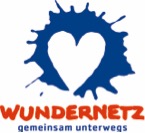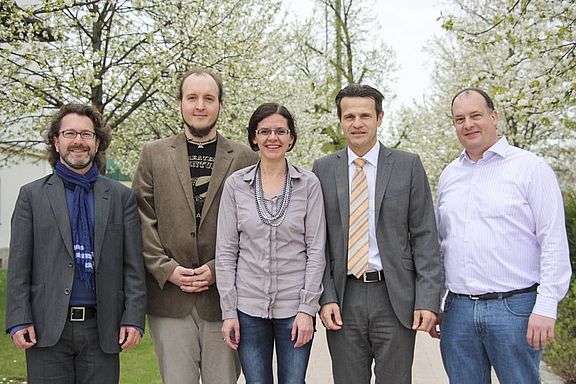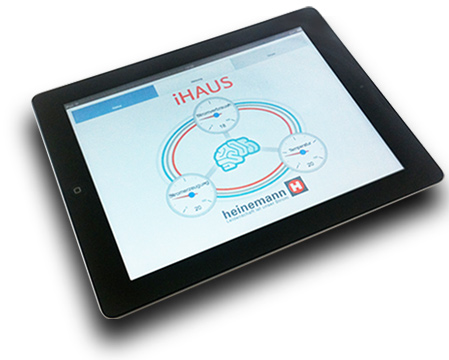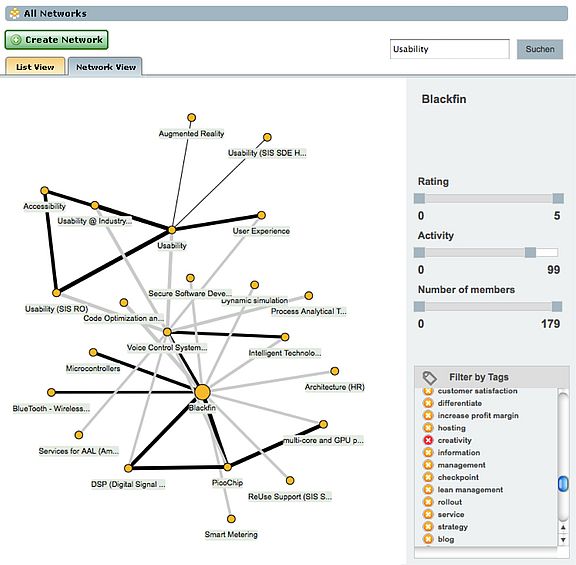Research and development
On the web
Selected publications are available at Researchgate
Conference papers
(Peer Reviewed)
Meiller, D, Wiehl, M & Bäuml L. (2024): Automated Evaluation of Games Programmed in Computer Science Assessments: The use of CodeRunner to validate code written in the Processing Language. In: Proceedings of the 2024 on Innovation and Technology in Computer Science Education V. 2 (ITiCSE 2024). 775–776. Association for Computing Machinery, New York, NY, USA. doi.org/10.1145/3649405.3659516
Steiner, M. & Meiller, D. (2023): Human in Focus: Evaluation with Electro Graphic Methods and Artificial Intelligence. In: Miranda, P. & Isaías, P. et al. (Hrsg.): Proceedings of the International Conference on Applied Computing / WWW/Internet 2023 . ISBN: 978-989-8704-53-5. IADIS Press.
Steiner, M. & Meiller, D. (2023): Simple Measurement of User Response. In: Blashki, K. et al. (Hrsg.): International Conference Interfaces and Human Computer Interaction 2023 . ISBN: 978-989-8704-49-8. IADIS Press.
Meiller, D. (2022): Flutter: The Future of Application Development? In: Kommers, P. et al. (Hrsg.): 12th International Conference on Internet Technologies & Society 2022. ISBN: 978-989-8704-46-7. 197-200. IADIS Press.
Pretter, pp. & Meiller, D. (2022): Approach to predict Student Engagement in Video Lectures. In: Kommers, P. et al. (Hrsg.): 12th International Conference on Internet Technologies & Society 2022. ISBN: 978-989-8704-46-7. 161-164. IADIS Press.
Scharnagl, T. & Meiller, D. (2021): Physically based materials synthesis. In: Xiao, Y. Abraham A. & Peng, G. C. (Hrsg.): International Conferences Computer Graphics, Visualization, Computer Vision and Image Processing 2021, pp. 127-132, ISBN: 978-989-8704-32-0, IADIS Press.
Meiller, D. & Schieder, C. (2018): Applied Machine learning: Predicting behaviour of industrial units from climate data. In: Abraham A. P., Roth, J. & Peng, G. C. (Hrsg.): Multi Conference on Computer Science and Information Systems 2018, pp. 66-72, ISBN: 978-989-8533-80-7, IADIS Press
Meiller, D., (2017). Die Gestaltung und Implementierung eines virtuellen Klosterführers. In: Burghardt, M., Wimmer, R., Wolff, C. & Womser-Hacker, C. (Hrsg.), Mensch und Computer 2017 - Tagungsband. Regensburg: Gesellschaft für Informatik e.V.. (pp. 289-294).
Schöler-Niewiera, F. & Meiller, D. (2017). Visual Analytics für haptische Datenanalyse im industriellen Umfeld von Big Data. In: Burghardt, M., Wimmer, R., Wolff, C. & Womser-Hacker, C. (Hrsg.), Mensch und Computer 2017 - Workshopband. Regensburg: Gesellschaft für Informatik e.V..
Martens, B., Bittner, D., Meiller, D., Heckmann, D., Schäfer, U. & Frey, M. (2017). Interactive Smart Mirror. In: Burghardt, M., Wimmer, R., Wolff, C. & Womser-Hacker, C. (Hrsg.), Mensch und Computer 2017 - Workshopband. Regensburg: Gesellschaft für Informatik e.V..
Meiller, D. (2017): Using Intractive Visual Analytics to analyze influences of climate on industrial production. In: Yingcai Xiao & Ajith P. Abraham (Ed.): International Conferences Computer Graphics, Visualization, Computer Vision and Image Processing 2017 and Big Data Analytics, Data Mining and Computational Intelligence 2017, IADIS Press, pp. 357-358, ISBN: 978-989-8533-66-1
Meiller, D.; Müller, K.; Legat, H. & Gerlang, B. (2016): Barrierefreiheit im Web für Bildungseinrichtungen. In: Heinrich C. Mayr, Martin Pinzger, ed., Lecture Notes in Informatics (LNI) –Proceedings. Series of the Gesellschaft für Informatik (GI). Volume P-259, Gesellschaft für Informatik, Bonn, pp. 1105-1108
Meiller, D. & Niewiera, F. (2016): Visual Analytics zur Auswertung von Daten für die Industrie 4.0. In: Prinz, W., Borchers, J. & Jarke, M. (Hrsg.), Mensch und Computer 2016 - Tagungsband. Aachen: Gesellschaft für Informatik e.V.
Meiller, D. & Niewiera, F. (2016): Data Visualization and Evaluation for Industry 4.0 using an interactive k-Means Algorithm. In: Vaclav Skala (Ed.): WSCG'2016 - 24th International Conference in Central Europe on Computer Graphics, Visualization and Computer Vision'2016 proceedings, Computer Science Research Notes [CSRN] ISSN 2464-4617
Meiller, D. (2015): Diving into the Data Ocean. In: J. Abascal et al. (Eds.): INTERACT 2015, Part IV, LNCS 9299, pp. 465–468. DOI: 10.1007/978-3-319-22723-8_39
Meiller, D. (2015): Von Neumann Data. In: Proceedings of the 36th IATUL Conference, 5 - 9 July 2015 – Strategic Partnerships for Access and Discovery. Hannover, Germany.
Meiller, D. (2014): Data Ocean. In: Butz, A., Koch, M. & Schlichter, J. (Hrsg.), Mensch & Computer 2014 - Tagungsband. Berlin: De Gruyter Oldenbourg. (pp. 307-310).
Meiller, D. (2013): Interaktive Informationsvisualisierung in sozialen Netzwerken. In: Matthias Horbach, ed., Lecture Notes in Informatics (LNI) –Proceedings. Series of the Gesellschaft für Informatik (GI). Volume P-220, Gesellschaft für Informatik, Bonn, pp. 122-124
Meiller, D. (2013): Web-basierte Steuerung von Geräten im Haus. In: Matthias Horbach, ed., Lecture Notes in Informatics (LNI) –Proceedings. Series of the Gesellschaft für Informatik (GI). Volume P-220, Gesellschaft für Informatik, Bonn, pp. 125-127.
Meiller, D. (2013): A Social Sculpture for the Digital Age. In: Susanne Boll; Susanne Maaß & Rainer Malaka, ed., 'Mensch & Computer 2013 - Workshopband', Oldenbourg Verlag, München, pp. 505-508.
Meiller, D., Hemmje, M. & Klas, C.-P. (2012): Aesthetic visualisation of information: optimization of graph representations. In: Proceedings of the International Working Conference on Advanced Visual Interfaces, AVI '12. ACM, New York, NY, USA, pp. 653-656
Books
Kayser-Meiller, M. & Meiller, D. (2023). Unterwegs im Cyber-Camper: Annas Reise in die digitale Welt. Berlin, Boston: De Gruyter Oldenbourg. ISBN: 9783110738216 https://doi.org/10.1515/9783110733396
Meiller, D. (2021): Modern App Development with Dart and Flutter 2 – A Comprehensive Introduction to Flutter. De Gruyter Oldenbourg, ISBN: 978-3110721270 https://doi.org/10.1515/9783110721331
Meiller, D. (2021): App-Entwicklung mit Dart und Flutter 2 – Eine umfassende Einführung. De Gruyter Oldenbourg, ISBN: 978-3110752984 https://doi.org/10.1515/9783110753080
Meiller, D. (2020): Moderne App-Entwicklung mit Dart und Flutter – Eine umfassende Einführung. De Gruyter Oldenbourg, ISBN: 978-3-11-069064-4
Meiller, D. (2010): Dissertation: Zur ästhetischen Visualisierung von Information – Die Zeit der Graphen. FernUniversität in Hagen.
Lectures/Workshops/Exhibitions
Lecture: Generating Films with Artificial Intelligence - Stable Diffusion and Deforum, Long Night of Science 2023, Nuremberg on 21.10.2023
Lecture: Capture of exhibits for presentation in virtual worlds. EDV-Tage Theuern at the invitation of Kulturschloss Theuern, Amberg on 19.09.2019.
Tutorial: Modern App Programming with Flutter and Dart. Accepted tutorial, Mensch und Computer 2019, Hamburg on 09.09.2019.
Tutorial: Modern App Programming with Flutter and Dart. Accepted lecture, Gulaschprogrammiernacht 2019, Karlsruhe on 02.02.2019.
Lecture: The history of digital communication. EDV-Tage Theuern 2017 on 22.09.2017 at the invitation of Kulturschloss Theuern. DOI: 10.13140/RG.2.2.28026.18883
Lecture: Industry Software Application Center: ISAC@OTH-AW - cross-faculty project to promote the benefits of Industrie 4.0 for medium-sized companies. Indigo Conference 2017, Amberg on 30.6. 2017.
Lecture: Experiences in the implementation of service learning using the example of the project: Gemeinsam Unterwegs - Das Wundernetz, Ingolstadt on 13.01.2016 at the invitation of DIZ Ingolstadt.
Exhibition: Maschinenmensch-Menschmaschine. Cultural Castle Theuern, 12.11. - 14.11.2015.
Lecture: The research field of man-machine interaction. Lecture series of the Academy for Nature and Industrial Culture, Weiherhammer on 22.1.2015 at the invitation of the Academy for Nature and Industrial Culture East Bavaria-Bohemia.
Lecture: advertising games and advertising in games. Lecture series Games at WERK1, Munich on 14.01.2015 at the invitation of MedienCampus Bayern e.V.
Exhibition: In the heart of Europe - Europe in the heart? Steinstadl Kastl, 25.10. - 2.11.2014.
Lecture: Realization of a kiosk system for a museum exhibition in connection with a (virtual) exhibition on the web. EDP Days Theuern, 26.9.2014.
Workshop: Quick start in game programming. Medientage München on 26.10.2012 at the invitation of MedienCampus Bayern e. V.
Lecture: Generative Design with Processing. Medientage München on 21.10.2011 at the invitation of MedienCampus Bayern e. V.
Workshop: Accessible Internet for the Mentally Handicapped. PIKSL Consortium, Düsseldorf on 23.February 2010 at the invitation of In der Gemeinde leben gGmbH.
Exhibition: Visual Computing & Computational Art. OTH Amberg-Weiden, 9-11.10.2009
Projects (selection)
Didactics across borders
From December 2020 to March 2023, the international project "Didactics across borders - We teach together for the future" ran in cooperation with the University of Pilsen (CZ) and the Bärnau-Tachov History Park, providing historical content in modern, digital form for future educators and students. The main objective is to optimize the didactic and media design of the historical content and to use the latest intelligent technologies for this purpose. Through the digital media, an increased interest in the topic and better learning behavior should be achieved among the students. The educators are supported by a modern and intelligent platform in the creation, updating and follow-up of the teaching material.
Project website
ISAC@OTH-AW
Development of novel operating concepts for the control and monitoring of digital production
Based on existing industry contacts, previous research and development work, as well as findings from supervising master's theses conducted in industrial companies, we have recognized that there is a need for research in the area of operating concepts of distributed digital industrial controls. This need is likely to be further increased by the initiatives to introduce Industry 4.0 in Bavaria. This becomes obvious when one considers that even regional manufacturers are planning industrial plants that are to operate largely autonomously and self-regulating in the future. If personnel no longer work directly on the machine, the possibility of monitoring and control from outside must be given. The ever-increasing interconnection of production processes requires a global form of operational monitoring that must replace the locally operating monitoring and control systems that have prevailed up to now.
The project runs from September 2015 to September 2021.
Virtual sensor technology in the corrugator
Analysis of the correlation between production and weather data.
Meanwhile, the digital factory is centrally monitored and controlled. For this purpose, the data from the machines is transferred to interfaces: for monitoring and operating. These interfaces display the data and enable interaction with the plant. The next stage of expansion is the automatic analysis of this data in order to derive forecasts and parameters. This will be done using global context data, for example weather data for all corrugators (corrugator plants). The goal in this project was to process data from corrugators in interaction with climate data in order to derive better setting parameters to increase production and process quality.
Key results of the project:
A correlation between climate data in the hall and the power consumption of the plant components was demonstrated. In addition, the influence of the weather on energy consumption and on the hall climate was demonstrated. Short-term forecasts of the hall climate can be made from existing weather data.
The project ran in cooperation with the company BHS Corrugated in the period from 15.11.2016 to 14.11.2017.
Miracle network - on the road together

Until now, there has been no networking in the area of accessible education and leisure in the Amberg-Sulzbach region. The "Open Disability Work" therefore joins forces with local and regional educational institutions, with the local TV station and the East Bavarian Technical University Amberg-Weiden to form the "Wonder Network" in order to advance fundamental and structural improvements. The working group of the OTH Amberg-Weiden focuses on consulting and development in the area of barrier-free web.
To implement the work described, a half-time position for a project engineer was created at OTH, which was filled by a bachelor of media production and technology from October 2015. The technical coordinators are Professors Karlheinz Müller, responsible for the graphic work, and Dieter Meiller, responsible for the technical work. The following work packages were carried out:
- Research of the basics of web accessibility
- Implementation of an accessible project website
- Checking of web pages of the participating educational institution for accessibility
- Development of a symbol font
- Conducting user tests together with people with disabilities
- Documentation and publication of the findings
Das Projekt lief von 2015 bis zum Ende des Jahres 2017
Virtual museum exhibition for the cultural castle Theuern
The Mining and Industry Museum in Theuern, which opened in 1978, aims to research, document and present the mining and industry of the entire eastern Bavarian region. As part of this work, a redesign of the exhibition on the topic "Made in Germany - Made in Eastern Bavaria" is being carried out, which highlights and depicts the history of industry in the Upper Palatinate in the period from 1800 to the present day. Since the Internet plays a major and increasingly important role today and is now one of the most widely used media, the exhibition is also presented and supported by an attractive web presence . But also the exhibition itself is equipped with touch-controlled media stations, which bring the visitor desired and important information closer. The media stations also form a small point of interaction that makes history more "tangible" and thus more interesting for the younger generation. The implementation of this task was carried out in cooperation with the East Bavarian Technical University Amberg-Weiden, which supervises this topic in both bachelor and project work.
BHS Human-Machine Interaction Project
BHS Corrugated, based in Weiherhammer, Germany, is the world's largest manufacturer of corrugators and corrugating rolls. The company operates worldwide in 26 countries and employs 1500 people. There are many contacts with the OTH-AW, for example BHS has its own seat on the university council.
In order to be able to continue offering innovative products in the future, the company is expanding its commitment to research and university cooperation. To this end, the focus will be increasingly on information and communication technologies.
A particular challenge in the control of industrial plants is the increasing complexity and the decoupling of the control system from the machine itself. Higher-level computer systems control the perfect interaction of all individual machines and provide exactly the information that the operator needs for the current task.
Machines in the industrial environment are increasingly operated by computers, but also by so-called smart devices (such as tablets or cell phones). In this context, mobile devices can be operated from anywhere in the plant.
This transition from mechanical to digital operating concepts can be seen as a new industrial revolution that holds both opportunities and risks.
Science has only just begun to deal with this topic. The development departments in industry are also in the process of taking a closer look at the new challenges.
This is where the development project of the OTH-AW and the BHS came in.
The subject of the project is the analysis, design and development of new user interfaces for the control of industrial plants.
The core objective is to achieve the best possible human-machine interaction.
The project ran from April 2015 to April 2016.
iHouse
The aim of the project was to develop a web-based application that allows tablet computers to operate individual devices within a house via the Internet. The software was realized using the standardized technologies and is executable on the iPad as well as on Android devices. In addition, the control can also be done from the desktop computer. The user should always have the feeling of complete control by being given direct feedback.
Technovis / PlexoJS
The goal of the project was to develop software for visualizing and analyzing relationships in web-based social networks. The company Siemens operates its own platform in the intranet, in which developers can organize themselves worldwide. Synergy effects are to be promoted by this internal social network. Developers who are scattered around the world working on similar topics are given the opportunity to get in touch with each other and exchange ideas through this platform.
However, the biggest and unsolved difficulty for users so far has been finding networks that are relevant to them. The search function previously only provided a linear listing of search results, similar to those of conventional search engines. In the project, a visual representation of the network was developed as a graph representation, which allows an interactive search. A particular challenge was the requirement from Siemens that the developed application should be executable in all web browsers, even in older versions, without the use of additional plugins.



